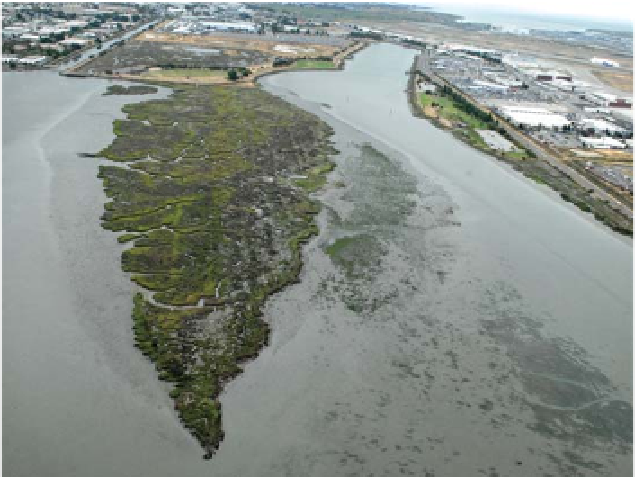Biology Reference
In-Depth Information
than left to the tides. She shakes her head over one recalcitrant rancher
who wouldn't sell, and kept pumping away the ponded rainwater on his
grazing fields rather than leaving it for birds and wildlife. She remembers
acquiring another small marsh with two phone calls. She has cleaned inva-
sive water hyacinths out of freshwater pools and handpicked pellets of Sty-
rofoam out of a newly created slough channel where the backhoe dis-
turbed some old garbage. And she has probably read thousands of pages of
environmental impact reports to save wetlands from being transformed
into waterfront condo complexes, malls, and golf courses. She has won
these battles by bringing to light how many Clapper Rail nests or acres of
foraging grounds or pickleweed would be lost if the bulldozers were to be
let loose on various historic baylands.
“Back in the 1970s, everyone wanted to save the pretty ridge tops, so
most of the priority areas for preservation were uplands. We felt the bay
shore and wetlands were being neglected, and decided to do something
about it,” says Salzman.
With so little left of them around the bay and in the delta, wetlands
certainly needed the attention. By the 1970s, shorebirds and waterfowl,
Harvest Mice, and Clapper Rails had lost 90 percent of their historic wet-
land habitats. Foxes, rats, raccoons, and cats began to invade their habi-
tats via levee tops to hunt birds and mice. Hawks found new perches on
power pylons from which to scout the marsh for delicacies. Contaminants
began to concentrate in wetlands and waterways draining agricultural
Arrowhead Marsh on the East Bay shore. (Drew Kerr)


